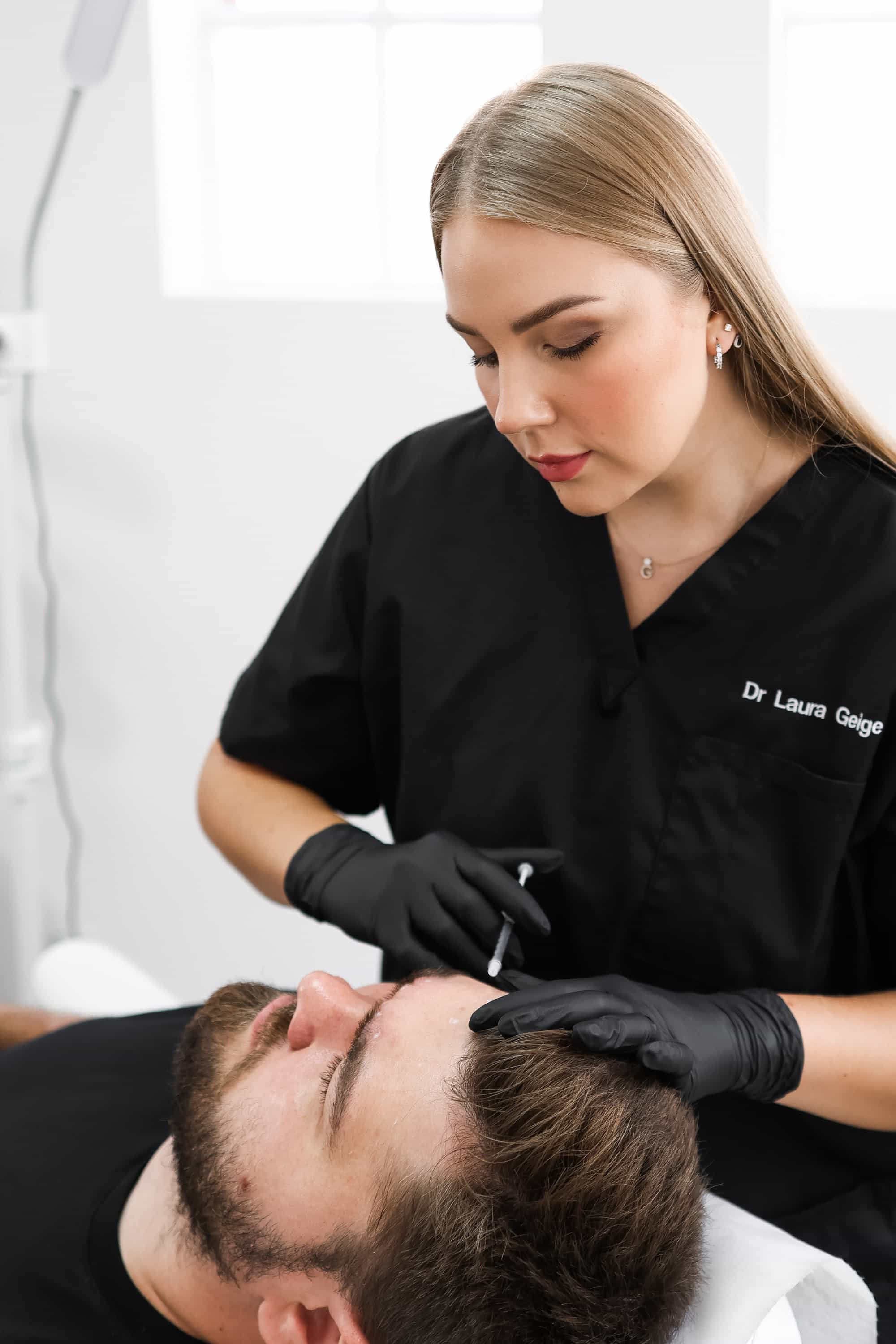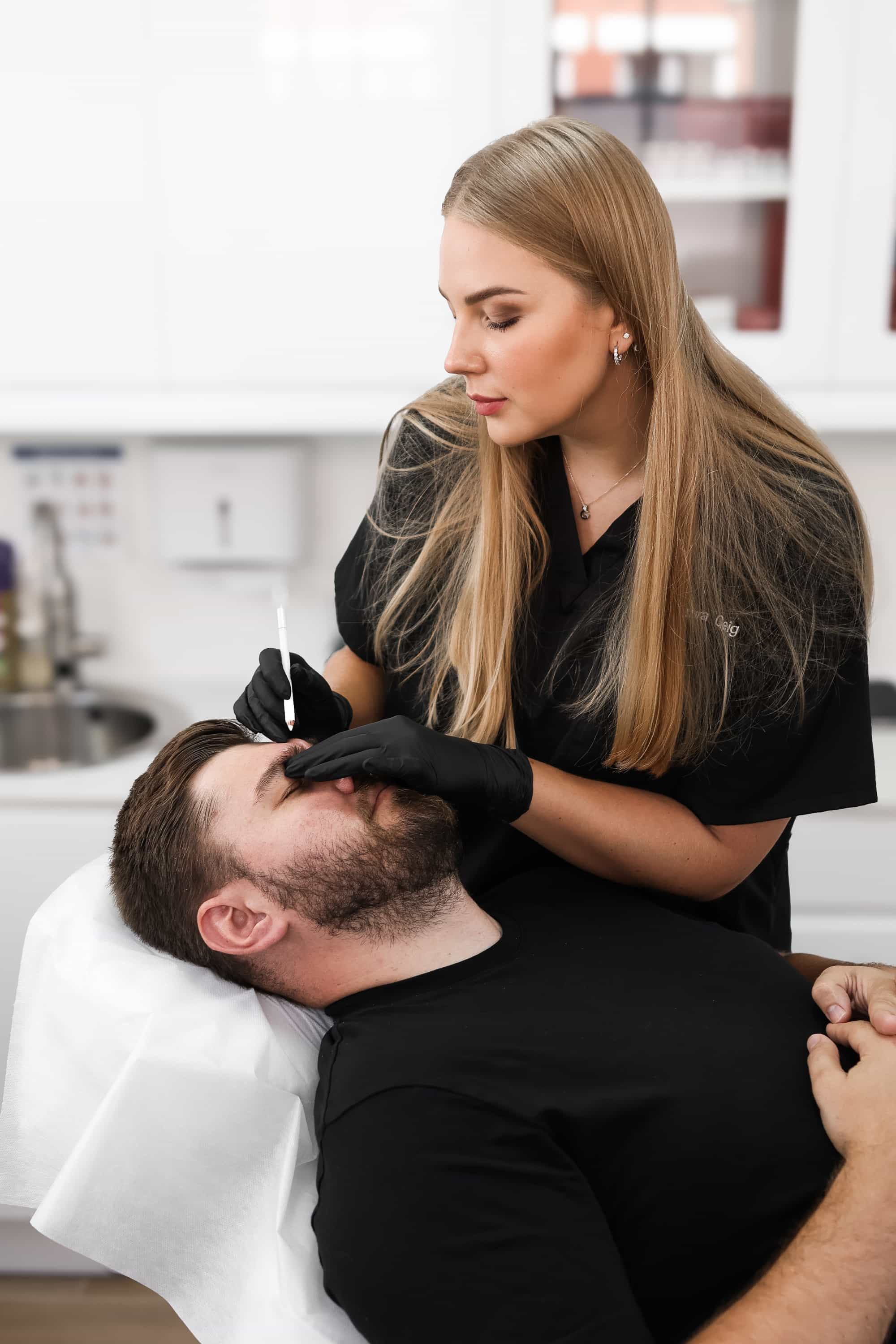What Causes Bunny Lines And How To Prevent Them
Causes of Bunny Lines
Those adorable vertical lines that often appear on the sides of the nose, sometimes referred to as “bunny lines,” are a common concern for many people. These wrinkles are essentially folds in the skin caused by repeated muscle contractions.
Facial Muscle Movements
Bunny lines, or nasal labial folds, form when the muscles surrounding the nose contract repeatedly. The primary muscle responsible for these lines is the nasalis muscle, which controls flaring of the nostrils. When we laugh, sniffle, or even just concentrate, this muscle tenses, leading to the visible creases that become more pronounced over time.
Sun Exposure and UV Rays
Those adorable vertical lines that often appear on the sides of the nose, sometimes referred to as “bunny lines,” are a common concern for many people. These wrinkles are essentially folds in the skin caused by repeated muscle contractions.
Bunny lines, or nasal labial folds, form when the muscles surrounding the nose contract repeatedly. The primary muscle responsible for these lines is the nasalis muscle, which controls flaring of the nostrils. When we laugh, sniffle, or even just concentrate, this muscle tenses, leading to the visible creases that become more pronounced over time.
While aging and genetics play a role in skin elasticity, external factors can also contribute to the appearance of bunny lines. Sun exposure and UV rays are significant contributors to skin damage, including the premature formation of wrinkles.
- UV radiation breaks down collagen and elastin, the proteins responsible for skin’s firmness and elasticity.
- This breakdown weakens the skin’s structure, making it more susceptible to wrinkling.
Ageing Process
Those adorable vertical lines that often appear on the sides of the nose, sometimes referred to as “bunny lines,” are a common concern for many people. These wrinkles are essentially folds in the skin caused by repeated muscle contractions.
Bunny lines, or nasal labial folds, form when the muscles surrounding the nose contract repeatedly. The primary muscle responsible for these lines is the nasalis muscle, which controls flaring of the nostrils. When we laugh, sniffle, or even just concentrate, this muscle tenses, leading to the visible creases that become more pronounced over time.
While aging and genetics play a role in skin elasticity, external factors can also contribute to the appearance of bunny lines. Sun exposure and UV rays are significant contributors to skin damage, including the premature formation of wrinkles.
- UV radiation breaks down collagen and elastin, the proteins responsible for skin’s firmness and elasticity.
- This breakdown weakens the skin’s structure, making it more susceptible to wrinkling.
Genetics
Genetics play a significant role in determining individual susceptibility to wrinkles, including bunny lines. People with thinner or less elastic skin due to genetic predisposition may be more prone to developing these lines at an earlier age.
Furthermore, genes can influence the structure and activity of the nasalis muscle, which is responsible for creating bunny lines. If someone has a naturally more prominent nasalis muscle or if their muscle fibers are more prone to contracting repeatedly, they may develop bunny lines more easily.
Preventing Bunny Lines
Bunny lines, those endearing vertical wrinkles that grace the sides of many noses, are often a cause for concern. While these folds in the skin are largely caused by the repeated contractions of facial muscles, particularly the nasalis muscle responsible for nostril flaring, other factors also contribute to their development.
Protecting Skin from the Sun
Those adorable vertical lines that often appear on the sides of the nose, sometimes referred to as “bunny lines,” are a common concern for many people. These wrinkles are essentially folds in the skin caused by repeated muscle contractions.
Bunny lines, or nasal labial folds, form when the muscles surrounding the nose contract repeatedly. The primary muscle responsible for these lines is the nasalis muscle, which controls flaring of the nostrils. When we laugh, sniffle, or even just concentrate, this muscle tenses, leading to the visible creases that become more pronounced over time.

While aging and genetics play a role in skin elasticity, external factors can also contribute to the appearance of bunny lines. Sun exposure and UV rays are significant contributors to skin damage, including the premature formation of wrinkles.

- UV radiation breaks down collagen and elastin, the proteins responsible for skin’s firmness and elasticity.
- This breakdown weakens the skin’s structure, making it more susceptible to wrinkling.
Genetics play a significant role in determining individual susceptibility to wrinkles, including bunny lines. People with thinner or less elastic skin due to genetic predisposition may be more prone to developing these lines at an earlier age.
Furthermore, genes can influence the structure and activity of the nasalis muscle, which is responsible for creating bunny lines. If someone has a naturally more prominent nasalis muscle or if their muscle fibers are more prone to contracting repeatedly, they may develop bunny lines more easily.
Preventing bunny lines involves a multi-pronged approach that addresses both internal and external factors.

- Protect your skin from the sun: Regularly apply sunscreen with an SPF of 30 or higher to all exposed skin, even on cloudy days.
- Wear protective clothing: When spending extended periods outdoors, consider wearing a wide-brimmed hat and sunglasses to shield your face from direct sunlight.
- Stay hydrated: Drinking plenty of water helps maintain skin hydration and elasticity.
- Avoid smoking: Smoking damages collagen and elastin, leading to premature aging and wrinkles.
- Maintain a healthy lifestyle: A balanced diet rich in antioxidants and vitamins supports skin health.
Lifestyle Modifications
Preventing bunny lines involves a multi-pronged approach that addresses both internal and external factors.
- Protect your skin from the sun: Regularly apply sunscreen with an SPF of 30 or higher to all exposed skin, even on cloudy days.
- Wear protective clothing: When spending extended periods outdoors, consider wearing a wide-brimmed hat and sunglasses to shield your face from direct sunlight.
- Stay hydrated: Drinking plenty of water helps maintain skin hydration and elasticity.
- Avoid smoking: Smoking damages collagen and elastin, leading to premature aging and wrinkles.
- Maintain a healthy lifestyle: A balanced diet rich in antioxidants and vitamins supports skin health.
Topical Treatments
Topical treatments can help minimize the appearance of bunny lines by improving skin texture and elasticity. Retinoids, vitamin C serums, and hyaluronic acid moisturizers are popular choices.
Retinoids, derived from vitamin A, promote collagen production and cell turnover, leading to smoother and more youthful-looking skin. Vitamin C is a powerful antioxidant that protects against free radical damage and helps brighten the complexion, reducing the appearance of fine lines.
Hyaluronic acid attracts and retains moisture, plumping up the skin and minimizing the appearance of wrinkles. In addition to topical treatments, consider incorporating facial exercises or massage techniques that target the nasalis muscle. These exercises can help strengthen the muscles around the nose and improve blood circulation, potentially reducing the prominence of bunny lines over time.
Injections
Preventing bunny lines involves a multi-pronged approach that addresses both internal and external factors.
- Protect your skin from the sun: Regularly apply sunscreen with an SPF of 30 or higher to all exposed skin, even on cloudy days.
- Wear protective clothing: When spending extended periods outdoors, consider wearing a wide-brimmed hat and sunglasses to shield your face from direct sunlight.
- Stay hydrated: Drinking plenty of water helps maintain skin hydration and elasticity.
- Avoid smoking: Smoking damages collagen and elastin, leading to premature aging and wrinkles.
- Maintain a healthy lifestyle: A balanced diet rich in antioxidants and vitamins supports skin health.
Topical treatments can help minimize the appearance of bunny lines by improving skin texture and elasticity. Retinoids, vitamin C serums, and hyaluronic acid moisturizers are popular choices.
Retinoids, derived from vitamin A, promote collagen production and cell turnover, leading to smoother and more youthful-looking skin. Vitamin C is a powerful antioxidant that protects against free radical damage and helps brighten the complexion, reducing the appearance of fine lines.
Hyaluronic acid attracts and retains moisture, plumping up the skin and minimizing the appearance of wrinkles. In addition to topical treatments, consider incorporating facial exercises or massage techniques that target the nasalis muscle. These exercises can help strengthen the muscles around the nose and improve blood circulation, potentially reducing the prominence of bunny lines over time.
Discover the best Bunny Lines Treatment at It’s Me & You Clinic with Dr. Laura Geige.
- Where To Inject Botox For Nasal Flare? - January 9, 2026
- When Can You Wear Lipstick After Lip Filler - January 7, 2026
- What Type Of Filler For Tear Trough - January 6, 2026
